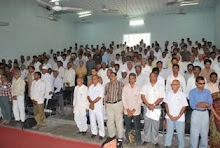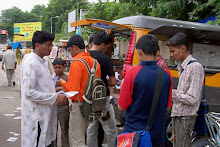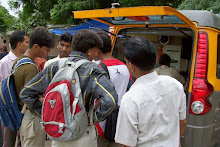Shipping
News: Varanasi: Wednesday, 04 March 2020.
Fourteen
months after Prime Minister Narendra Modi inaugurated the Varanasi multimodal
terminal located on the Ganga, the terminal has handled only 282 metric tonnes
of cargo, as per the government’s response to an RTI query filed by a
Pune-based NGO. Government estimates had pegged the volume of traffic at the
Varanasi terminal at 3.55 million metric tonnes by 2020.
The
terminal is part of the Jal Marg Vikas Project (JMVP) for navigation of cargo
which stretches from Haldia in West Bengal to Varanasi in Uttar Pradesh under
the National Waterway-1. It is a 1,620-km stretch.
The
project entails construction of three multi-modal terminals at Varanasi,
Sahibganj and Haldia at a cost of Rs 5,369.18 crore as a joint project between
the Union government and the World Bank.
Documents
accessed by NGO Manthan Adhyayan Kendra show that the volume of traffic from
March 2018 to 2020 has been 1,809 MT at Gaighat in Bihar and 3,725 MT at the
Sahibganj terminal. “The commodity of cargo handled on these terminals are
fertilizers, edible oil, food products, stone chips, FMCG products, TMT bar and
other steel structures…” according to the RTI response.
“Even
if we keep aside the massive social and environmental costs involved, concerns
on the financial viability of this project remain, which in my opinion, should
be revisited,” said Avli Verma, a researcher at Manthan who visited the
terminal between February 8 and 10. “Cargo projections do not live up to the
actual cargo handling on the terminals. We can clearly see that there is a huge
difference between what was promised and what is delivered. Even though the
terminals are being ‘completed in record time,’ Inland Waterways Authority of
India is not able to utilise the Varanasi terminal built on huge costs, and
land acquisition is ongoing for freight village and phase-II of the same,” she
said.
Verma
also pointed to low movement of cargo on the Gaighat terminal despite cargo
jetties on the terminal being operational since 2012. “The reason for this is
the difficulty to maintain adequate water level in the navigation channel,” she
said. “Even in downstream reaches, movement of cargo is high only in the
reaches which have tidal influences. Bunching of barges is done, and mostly fly
ash is being transported from Kolkata through Haldia to Bangladesh.”
Quoting
the CAG Report of 2016, Verma said after March 2015, at Gaighat terminal in
Patna, “only 300 MT cargo was handled in the year 2012-13 and thereafter no
cargo movement was there till March 2015. Further, IWAI was required to
maintain adequate water flow in the channel by river training, dredging etc. to
keep it navigable round the year. Thus, infrastructure created at a cost of Rs
57.83 crore remained significantly underutilised.”
Verma
said when she visited the Varanasi terminal, she was told that only three cargo
movements had taken place through cargo jetty. “But the project is being
expanded and land acquisition is ongoing. Most of the local people were
complaining about getting constant threats from the administration to give up
their land for the expansion of the project and for the freight village. They
are asking for fair compensation but that is not being given to them,” she
said.
The
latest project status report from January 2020 also showed that no private bids
were received for the operation, management and development of the terminal
under PPP model.
Source:
The Indian Express














































































